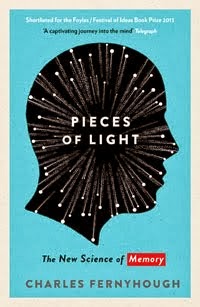On the point about toddlers' personalities, I'm not sure that my conclusions are really so clear-cut. Here's the passage from the book that Sass E-mum is referring to:
Here’s another reason why her antics as a toddler may not cause her mortal embarrassment later in life. You weren’t the same person as an infant as you are now. That baby in those funny stories from your childhood: that wasn’t you. If it is true that toddlers don’t have personalities, then there is nothing for their future selves to be embarrassed about.So much for the received wisdom (or at least one version of it). Here's what I go on to say:
Witness, again, my fruitless quest to find small children appearing as characters in adult novels. There are babies in fiction, without any agency of their own but with plenty of scope to cause trouble for the women, and sometimes men, who are left holding them. There are a few brilliantly observed three-, four- and five-year-olds. But toddlers, as owners of the sorts of belief systems and emotions that drive fiction, are largely invisible. When choosing who to put into their narratives, writers seem not to believe that a toddler’s personality is up to the job. This is a striking irony in itself, given how much the little scientist moonlights as a little novelist.
It also makes scant sense in light of parents’ oft-voiced convictions that they are watching a little personality unfold. For all that I have said about adults’ preconceptions and interpretations giving infants a leg-up into social interaction, one’s overwhelming impression as a parent—particularly a parent of two or more—is that one is watching the emergence of a character which is in many ways already partly formed. When Number One arrives, you try to mould her to your own image; when Number Two pops out, you see how determined Homo sapiens is to do its own thing. I have said little about the biological basis of Athena’s personality: the patterns of traits, preferences, habits and cognitive biases that carry the ghosts of her genetic inheritance. The science of behavioural genetics is all about explaining the differences between people in terms of their unique genetic endowment and their specific experiences. It is hard to focus on differences when your lens is trained on one particular child. If I asked the question again now, and thought about all the ways in which Athena differs from her brother, it might give me more of a handle on those aspects of her personality that had the force of biology behind them. I don’t know if I was right about her personality at age two. I don’t know if she is the same person now as she was then, any more than I know if I’m the same person I was when I was her current age. It is probably too soon to tell. But I know that she was a person. If this book makes any sense as a story, then that personality will have proved itself.So I think I leave the question unresolved. I really don't know if she's the same person now as she was back then, or whether she will be the same person as a teenager or an adult. Time will tell. But she was certainly a person; and if my book helps people to perceive those little personalities a bit more clearly, then it will have done its job.




